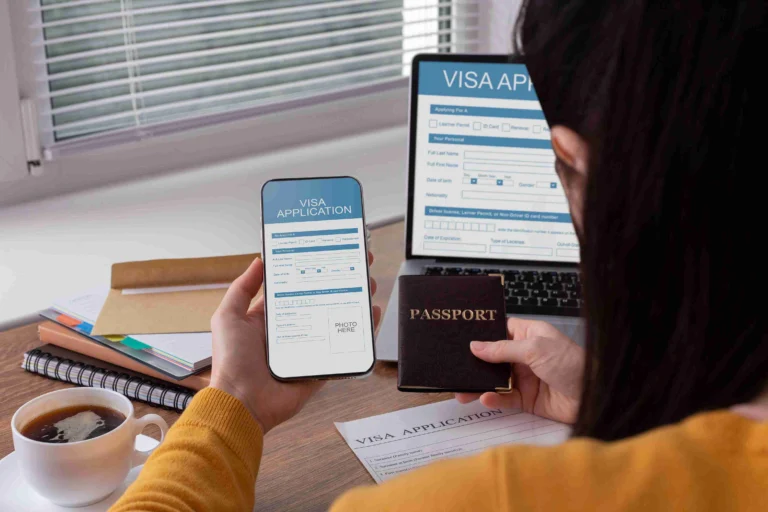
How to Get Direct PR in Australia from India in 2025? Latest Guide
Direct PR in Australia from India in 2025 is more accessible than ever, with streamlined pathways, updated skilled occupation lists, and faster processing times. Skilled Indians can apply through visas like Subclass 189, 190, 186, or the Global Talent Visa, without needing prior Australian work or study.
With higher quotas, new in-demand roles in IT, healthcare, and engineering, and clear step-by-step procedures, 2025 presents one of the best opportunities to secure permanent residency in Australia.
What is Direct PR and Who is Eligible?
Direct PR refers to the process of obtaining Australian permanent residency without having held a prior temporary visa in Australia. This typically involves skilled migration visas where applicants meet specific criteria under a points-based system or via employer sponsorship. The primary direct PR visas include Subclass 189, 190, 186, and the Global Talent Visa.
Eligibility requirements vary slightly depending on the visa type but generally include:
- Age below 45 years at the time of application.
- Occupation listed on the relevant skilled occupation list.
- Competent English language ability, usually demonstrated through tests such as IELTS or PTE.
- Successful skills assessment by a relevant Australian authority.
- Passing a points test, with a minimum score of 65 for most visas except the Global Talent Visa, which does not require points testing.
The Global Talent Visa is particularly attractive for Indian professionals with exceptional achievements, as it offers a direct path to PR without the need for a points test or employer/state sponsorship.
This eligibility framework ensures that the most qualified and skilled candidates from India can apply directly for permanent residency, often faster and with more certainty than temporary visa pathways.
Key Benefits of Direct PR in Australia
Direct PR in Australia from India offers numerous benefits for Indian professionals, making it an appealing immigration option:
- The right to live, work, and study in Australia indefinitely.
- Access to Medicare, Australia’s public healthcare system.
- Eligibility to sponsor relatives, including spouse, children, and parents, for permanent residency.
- A clear pathway to Australian citizenship, typically after fulfilling residency requirements.
- No requirement to have prior study or work experience in Australia before application.
- Visa holders can travel freely in and out of Australia.
These benefits collectively provide not only security but also extensive freedom and opportunities for individuals and families settling in Australia.
Start your career in Australia with the employer-sponsored Skills in Demand (subclass 482) visa, your pathway to permanent residency.
Direct PR from India to Australia: Step-by-Step Process in 2025
The process to obtain direct PR involves several key steps. Understanding each phase helps applicants prepare more effectively and avoid unnecessary delays.
Step 1 – Check Eligibility & Points Score
First is to know whether you are eligible in all terms of requirements. These include:
- Age: The person has to be below 45 generally.
- Occupation: Needs to be in the list of skilled occupations applicable to your visa subclass.
- English proficiency: Good to excellent English, depending on points.
- Work experience and education: A good number of years of professional experience and acceptable credentials.
- Health and character: Good medical check-up, police clearance certificates.
The score is given according to the age, English language knowledge, education, working experience, and other factors. Subclass 189 and 190 need a minimum of 65 points. Higher points, typically, (between 75 and 85), enhance the opportunities.
Use our Australia Points Calculator to see if you meet the requirements.
Step 2 – Skills Assessment
After the eligibility, the applicants will take a skill assessment by the assigned Australian assessing authority for the occupation. This will be done to ensure that the qualifications and work experience fulfill Australian standards. The application includes educational certificates, work references, and a job description.
Step 3 – English Language Test
Demonstrating English proficiency is mandatory, with accepted tests including IELTS, PTE, and TOEFL. Most visas require at least an IELTS score of 6.0 or a PTE score of 50 (competent English). Your higher scores can score additional points in your application, and being invited is more likely to proceed.
Step 4 – Expression of Interest (EOI) via SkillSelect
- Applicants need to submit an Expression of Interest (EOI) on the SkillSelect system, providing their personal details, points score, occupation, and visa subclass.
- Points-based ranking is ranked according to the points, and then the highest-ranking ones are invited to apply to PR.
Step 5 – Invitation to Apply (ITA) & PR Application
When chosen, applicants are awarded an ITA, and they are given 60 days to file a complete visa application together with all supporting materials. Before making an application, it is important to prepare all support documents, such as identity proof, skills checks, test scores, and health checks.
Step 6 – Health & Character Checks
It requires the medical examination of the applicants and the statement of police clearance certificates to ensure the good health and character of the candidates.
Step 7 – Visa Grant & Post-Arrival Steps
When a visa is granted, the newcomers will be permitted to enter Australia and accomplish post-arrival duties, which include:
- Signing up for Medicare regarding health insurance.
- Taking a Tax File Number (TFN) with the Australian Taxation Office.
- Banking.
- Locating a place to live and integrating into society.
Direct PR Pathways: Subclasses 189, 190, 186, and Global Talent
If you’re aiming for direct permanent residency in Australia, several visa options can help you achieve it. Here’s a breakdown of the key pathways and how each one works:
Subclass 189 (Skilled Independent)
It is a point-tested visa, with no sponsorship requirement, and most appropriate to highly skilled workers whose occupation is on the Medium and Long-term Strategic Skills List (MLTSSL). It provides you with direct PR and the freedom to not only live, but also work in any part of Australia.
Subclass 190 (Skilled Nominated)
It has been nominated by the government of an Australian state or territory and is points-tested. The eligibility is based on possession of an occupation either in MLTSSL or the Short-term Skilled Occupation List (STSOL). Certain occupations may be provided with incentives or similar treatment of priority processing by different states.
Subclass 186 (Employer Nomination Scheme – Direct Entry)
It is made for skilled staff nominated by the Australian employers. All applicants should be eligible to have at least three years of relevant experience in the nominated occupation and meet other eligibility conditions. This visa is a direct PR, which is employer-sponsored.
Global Talent Visa (Subclass 858)
This visa is aimed at recruiting the best of talent in high-priority areas like technology, engineering, science, and medicine. It is special because it does not necessitate the performance of a points test or the sponsorship by an employer/state, and it assures the shortest processing period, which can take less than 8 months.
Planning to get a job in Australia? Check our guide: How to Get Job in Australia from India
Cost & Processing Time for Direct PR from India to Australia in 2025
Understanding the costs and processing times is essential for planning your direct PR application from India to Australia in 2025.
Application Fees and Other Costs
| Category | Amount (AUD) |
| Main applicant (189/190/186) | 4,910 |
| Dependent (Age 18+) | 2,455 |
| Dependent (Under 18) | 1,230 |
| Skills assessment | 300–1,000 |
| Standard English test (IELTS/PTE) | 350–400 |
| Health checks | 150–300 |
| Police certificates | Varies by country |
- Skills assessment and English test costs are typical ranges, but check with the relevant authorities for your specific occupation and provider.
- Police certificate costs will differ by country.
Processing Times (as of October 2025)
| Visa Subclass | Processing Time (90% of cases) |
| Subclass 189 | 14–18 months |
| Subclass 190 | 12–16 months |
| Subclass 186 | 10–12 months |
| Global Talent Visa | 4–8 months (fastest route) |
Documents Required for Direct PR in Australia from India in 2025
Here’s how each item in the core documentation checklist is essential for establishing your eligibility and making your direct PR application to Australia as strong and complete as possible:
Core Documentation Checklist
Here is a detailed explanation of each essential document required for direct PR in Australia from India:
- Valid Passport: This passport is the key identification document, and it should be valid throughout the visa application and even afterwards. It is checked to make sure you are the person you claim to be and are of a certain nationality.
- Skills Assessment Report: This is a document given by the concerned authority in Australia concerning the assessment of your profession. It ensures that your work experience and professional qualifications are up to the Australian standards, which is an important factor towards eligibility for the skilled migration visas.
- English Language Test Results: You must prove your English language skills with one of the following language tests: IELTS, PTE, or TOEFL. These outcomes demonstrate that you can communicate clearly in English, and this is a major parameter requirement of most skilled migration visas.
- Work Experience Letters Detailing Job Roles: Letters from present and past employers detailing your line of work, work experience dates, and specialised skills applied can be used as useful work experience proof.
- Educational Certificates and Transcripts: certificates and transcripts of educational establishments confirming your qualifications in well-known institutions will help your skills evaluation and points reckoning.
- Police Clearance Certificates: The certificate establishes you as a person of good character since it indicates that you do not have any record of having criminal behaviour in India or any of the other countries where you have resided.
- Medical Examination Report: A health screening done by paid medical professionals is required to ascertain your health standards to be in line with those of Australia, and that you are not a source of contamination to the rest of the community.
- Recent Passport-Sized Photographs: This passport should be in accordance with the Australian visa requirements and is an ID photograph to be filled in official papers.
- State or Employer Nomination Letter (for Applicable Visas): Where the visa is under subclass 190 (state nomination) or subclass 186 (employer nomination), a state government or employer nomination letter stating that the appropriate body endorses and sponsors the application is required.
All these documents are of critical importance in identifying your identity, skills, background, health, and eligibility, and make your application strong to get a direct permanent residency in Australia. Appropriate drafting and filing of these documents will very well lead to a successful and healthy PR experience.
Additional Documents for Specific Streams
- Employer-sponsored visas require formal nomination letters and contracts.
- Global Talent applicants need evidence of exceptional achievements such as awards, publications, or endorsements.
- Business or investment streams have separate documentation requirements.
Want to work abroad? Don’t miss: Australia Work Permit from India
Common Challenges & Solutions in the Direct PR Process
While applying for direct PR from India, candidates often face challenges, but understanding common issues and their solutions can help make the process smoother.
Points Shortfall and Competition
If points fall below the cutoff, applicants can:
- Improve English test scores for extra points.
- Gain additional work experience or education.
- Explore state nomination options with lower point requirements.
- Consider partner skills and language proficiency for supplementary points.
Document and Assessment Issues
Common issues include missing, unauthenticated, or untranslated documents. Solutions include:
- Careful review of checklist items.
- Engaging professional help for document verification.
- Early start to translation and authentication processes.
- Seeking expert advice for the correct format and submission.
Conclusion
In 2025, there are excellent chances for skilled professionals from India to get direct permanent residency in Australia. Acting quickly and getting expert help can greatly improve your chances.
We at VisaAxis can provide personalized guidance and support for a smooth application process.
Get in touch with us today to start your Australian PR journey!
Frequently Asked Questions (FAQs)
Q1. Can I apply for direct PR in Australia from India without a job offer?
Yes. You can apply for visas like Subclass 189 (Skilled Independent) and the Global Talent Visa without an Australian job offer, provided you meet the eligibility requirements, such as age limit, skills assessment, English proficiency, and points criteria.
Q2. What is the minimum IELTS score required for direct PR from India to Australia?
A minimum IELTS score of 6.0 in each band (or PTE score of 50) is required for “Competent English,” the common minimum level for skilled PR visas. Higher scores can give you additional points and improve your chances of selection.
Q3. How much does direct PR in Australia from India cost in 2025?
Total costs generally range between AUD 6,000–7,500 per adult, which includes: Visa application fees (AUD 4,910 for most subclasses), Skills assessment (AUD 300–1,000), English test (AUD 350–400), Medical and police checks (AUD 150–300+)
Q4. How long does the direct PR process take from India to Australia?
Processing varies by visa subclass: Subclass 189/190:14–17 months, Subclass 186: 10–12 months, Global Talent Visa: 4–8 months. Timelines depend on factors like occupation demand, points score, and document completeness.
Q5. Can I include my family in my PR application?
You may incorporate your spouse and dependent children in your German PR application. Every family member should be provided with individual documents like passports, birth and marriage certificates, and evidence of accommodation and income. There are extra charges for each member of the family. There is the PR status under which relatives are permitted to reside, work, and study in Germany with you upon approval.



